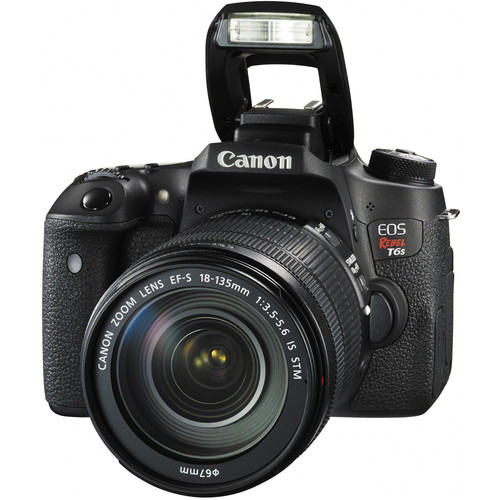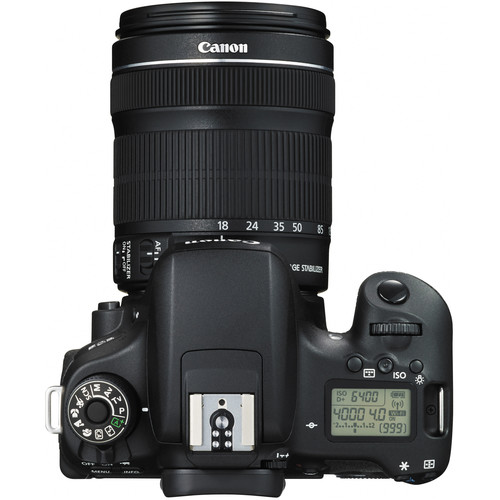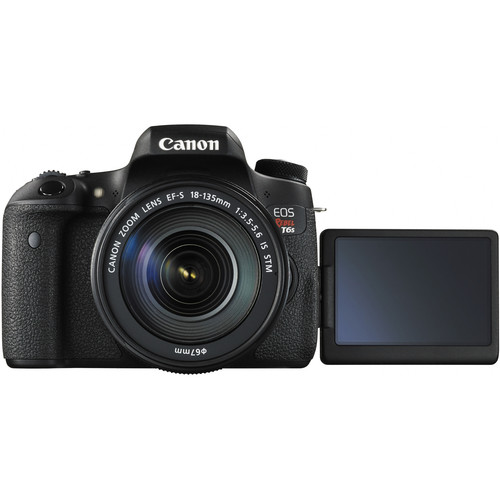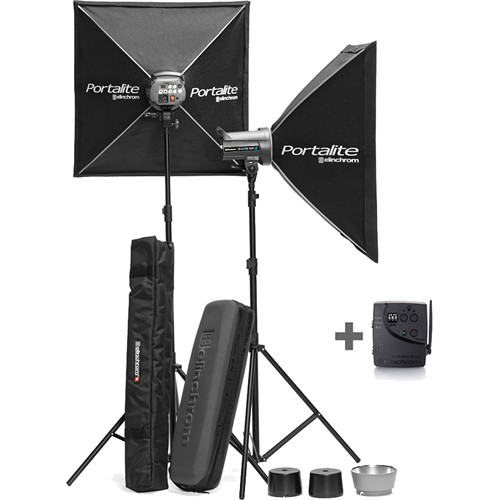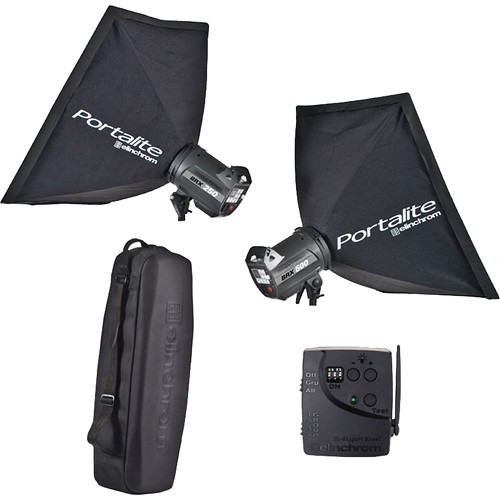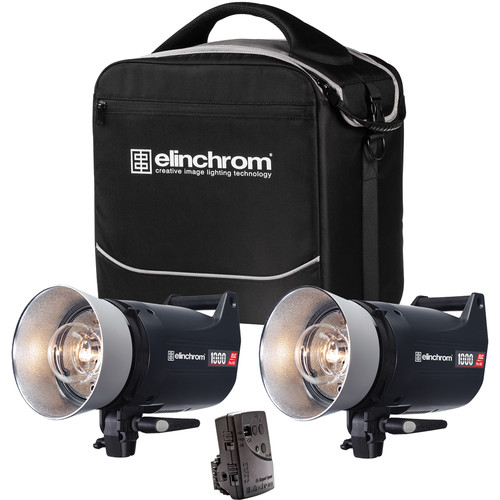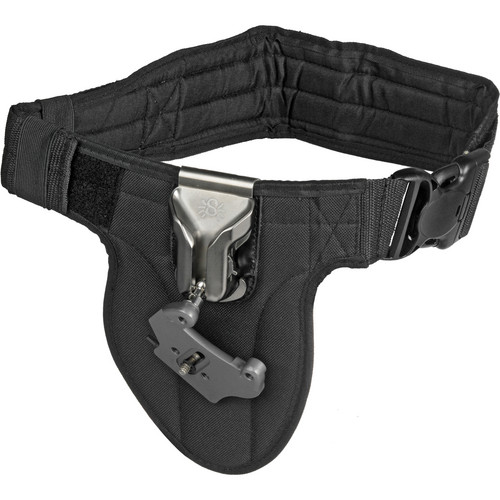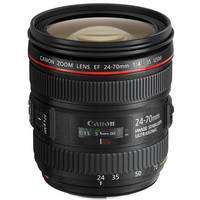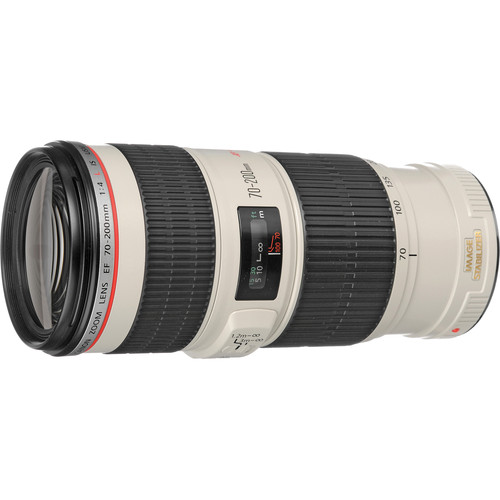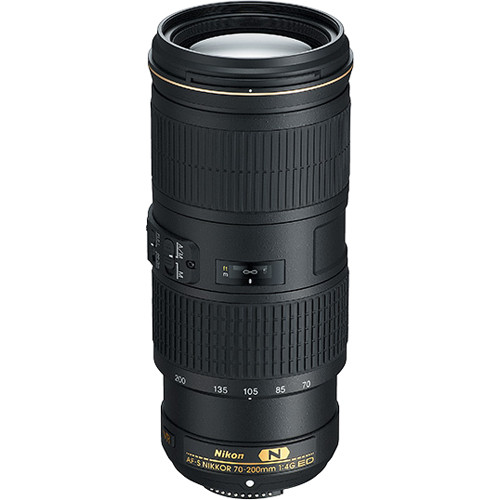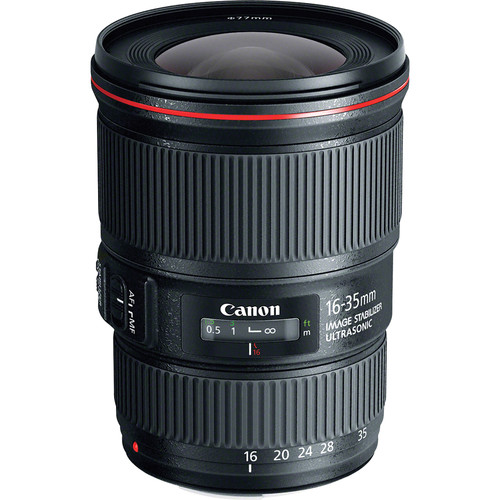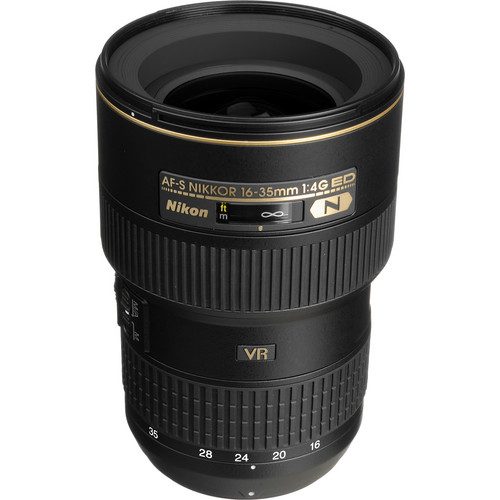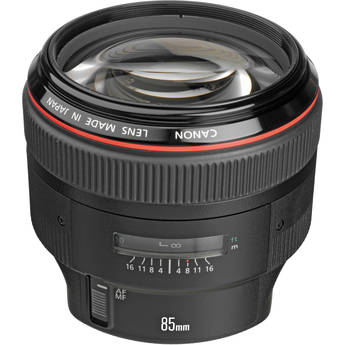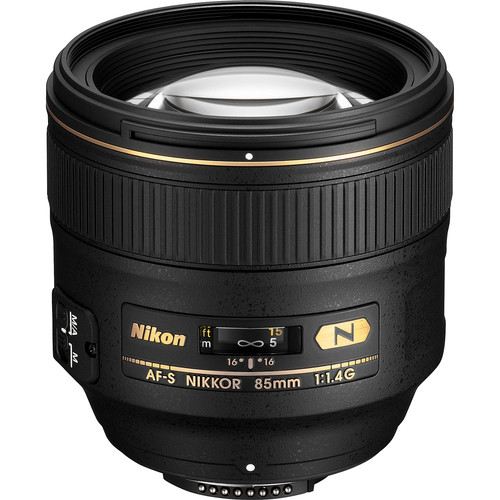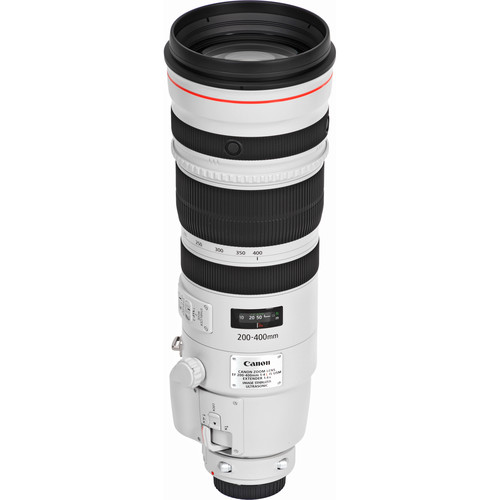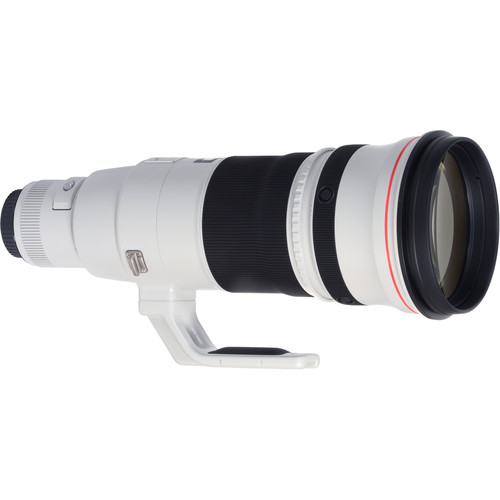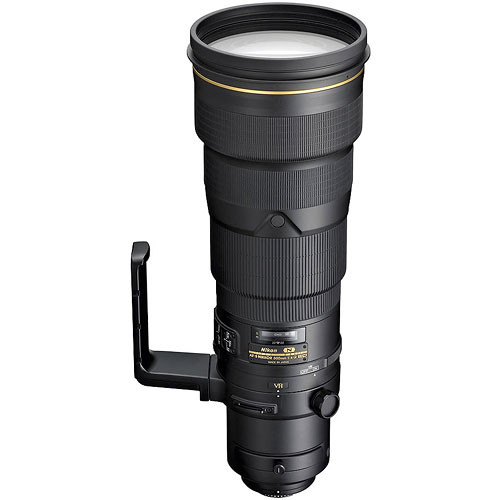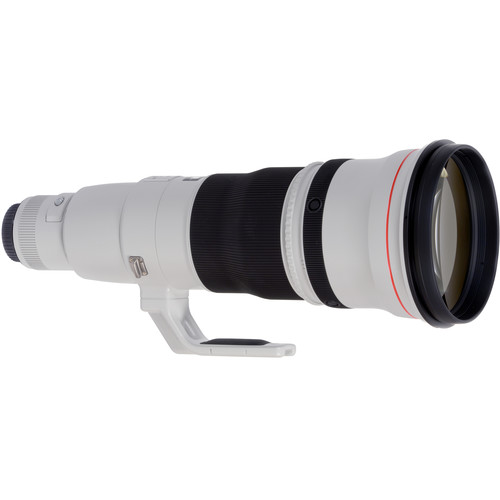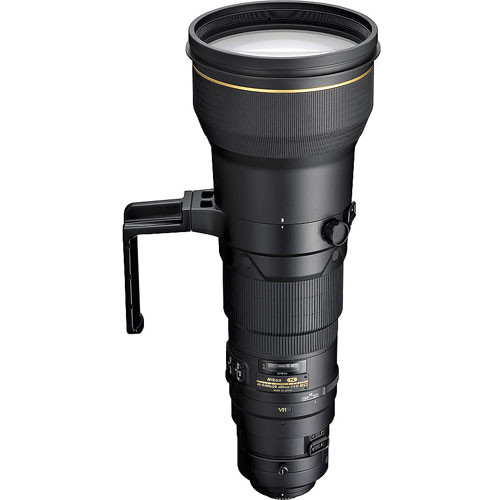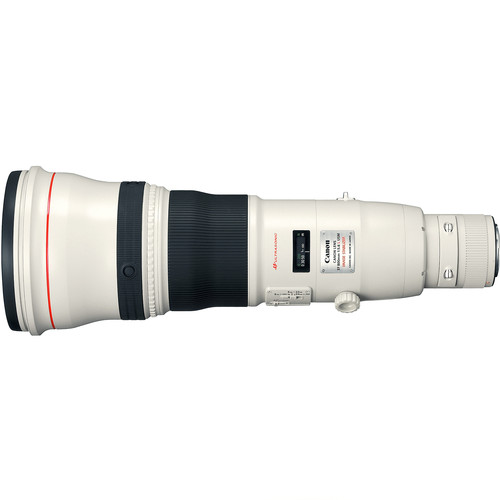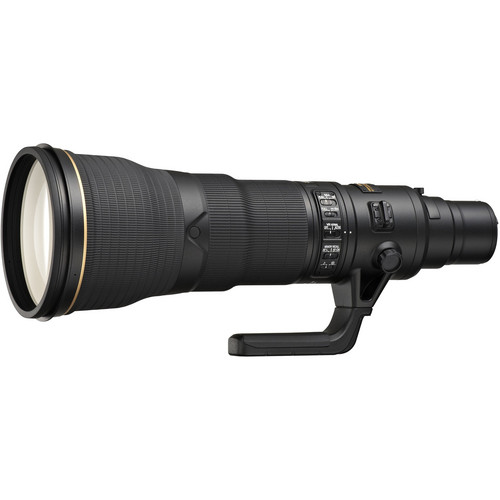Major Update: May, 6 2015
After which camera should I buy, the 2nd most common question I hear from people is which lens should I buy?
NOTE: This article covers DSLR’s. In the future I hope to work on a similar article for mirrorless cameras, but this article does not cover that topic in any way.
No matter which platform you choose, you should remember that if you take photography as a long term hobby that you will replace the camera body over time, but you probably will be able to use your lenses for many years with multiple camera bodies. This means that if you make wise lens choices that they will be good investments for many years to come. You should also understand that you can spend thousands of dollars on a camera body, but if you match it to a crappy lens, you are going to get a crappy picture. It's just like in the world of audio where a $4500+ receiver matched to $120 speakers is going to give you $120 sound.
Your lens is what captures the light and sends the image data to the sensor, so quality is the utmost importance. When get into photography you should prepare yourself to spend more money on the lens (or lenses) than you spend on the camera body itself (if image quality is your top priority).
With this in mind, you also need to think how you are really going to be using your lens when making your first lens purchase. The reality is that most of us can only afford one or two lenses up front. We want something that is practical when we are walking around taking pictures on vacation, or when we are indoors taking pictures of our toddler. Since babies and toddlers don't stay still for pictures, you are also going to need to use a fast shutter speed which means you need a fast lens, so in that sense it is a lot like shooting sports. :-)
A fast lens in photography geek speak is usually one that has a aperture (F-stop number) of 2.8 or lower. It’s called “fast” because you can generally use faster shutter speeds with these lenses as they get more light to the sensor. However, aperture also controls depth of field so the smaller the f-stop number the less depth of field (which can be desirable on long lenses and challenging on short ones). There are times where you don’t want a super shallow depth of field (i.e., f/1.4 might get one of your toddler’s eye in focus, but not the other – and it’s typically not the one you want because they move so much).
At f/2.8 you will generally get enough light into the camera in most situations to avoid using a flash. Often times they’ll help you have a reasonable shutter speed to avoid motion blur of your subject (assuming they are a slow moving adult). The problem here is that, generally speaking (especially in the zoom lens world), f/2.8 lenses are expensive.
Your first lens should realistically be a zoom lens and you'll want to cover at least 24mm to 70mm range (or equivalent on your cropped sensor lens). If your budget can afford it then it should be a f/2.8 or a f/4. For Nikon this means the AF-S Zoom Nikkor 24-70mm f/2.8G ED and for Canon it means the 24-70mm f/2.8 II USM. For the best results, you’ll want Image Stabilization (or Vibration Reduction in Nikon speak, or OS is also used but several third parties) but not all fast lenses feature this technology so sometimes you have to make a tradeoff. When all things are equal, I generally recommend getting a stabilized lens. This means that the 24-70 f/4L IS might actually serve most people better thanks to its stabilization support, even if it’s “only” a f/4 lens.
Before you buy, consider renting - with a discount!
Can afford the latest hot new lens? Me either – ha, ha! It’s still fun and worth checking out and building a wish list. You can also rent your favorite lens have your day of fun with it too!
My friends at LensRentals.com offer discounts on my discount coupon code page where you can rent your favorite lens, so be sure to consider that option if purchasing is too expensive for you.

Let’s face it, lenses are expensive! Nothing is worse than finally pulling the trigger and having a lens sit around and collect dust because you realize that you made a mistake. After all, some lenses are very specialized so while they are fun – there is such a thing as too much of a good thing! I’ve found myself in this shape with big sports lenses, fisheyes and tilt-shift lenses where I just didn’t use them enough to justify the cost.
Renting lenses is a great way to find out if you’ll really like a lens enough to own it or if you’ll use it so infrequently that renting as needed makes sense. By renting, I quickly learned that big lenses like the 400mm f/2.8L IS II USM are awesome when you need them, they are a pain to have around the house when you don’t! What’s more, they are a big investment, so even if I rented it for 30 four day rentals, I still wouldn’t have spent as much as it cost to own that lens! Since I have a photography business, that rental is tax deductible too!
With so many choices, how do I know if a lens is right for me?
One of the easiest ways to understand which lens is the right lens for you is to ask the right question. All too often I hear people saying, "what should I get a 50mm f/1.4 or a 70-200mm f/2.8?" In life there are few stupid questions, but that my friend is a stupid question. Why? Because a 50mm prime has an entirely different purpose than a 70-200mm f/2.8 zoom lens, and generally you don't get either or you get both (eventually). Instead, you should ask yourself what do you plan to shoot?
Another reality is that there is no one size fits all lens. While many people might think that a super zoom like the Canon EF 28-300mm f/3.5-5.6L IS USM or Nikon AF-S DX NIKKOR 18-300mm f/3.5-5.6G ED VR come close, my real world testing of both has left me underwhelmed. What’s more, when you zoom these out to 300mm you’ll super need fast shutter speeds (1/300 sec+) at their maximum focal lengths, yet you’ll be shooting them at their minimum aperture of f/5.6. This means you’ll be using high ISO’s for anything that moves on a sunny day and a cloudy day or indoor shot will mean you’ll most likely have to shoot your maximum ISO. High ISO’s mean noisy photos, so you’ll lose detail on what area already soft lenses so the end result will often disappoint. Yes, it’s true there are some great photographers like Bryan Peterson out there who can do amazing things with one of these lenses, but ask yourself – are you as good as Bryan? If the answer is no, then put the odds forever in your favour by getting a better lens!
Instead of buying the “one size fits all” lens that screams “I don’t know what I’m doing”, you should pick a category that makes sense for what you will shoot the most and then purchase the best that your budget allows. To help you with this I'll offer some categories with some recommended lenses, and you can choose the order in which you should tackle the categories:
Cropped vs Full Frame
When shopping for lenses, remember that most of the more inexpensive cameras will have a smaller sensor called a cropped sensor. If you have a cropped sensor camera then you’ll have the option of purchasing cropped sensor lenses which are typically cheaper than their full-frame counterparts.In the Canon world lenses for cropped sensors are called EF-S lenses in the Nikon world you will be looking DX-Format lenses. The good news is that all cropped sensor cameras will work with the full frame (35mm film equivalent) sensor lenses which are called EF lenses for Canon and FX-Format for Nikon. However, your full-frame cameras can NOT use cropped sensor lenses so be sure to pay attention when shopping.
WARNING: Certain Nikon bodies require AF-S lenses due to their lack of a AF drive motor, so buyer beware when lens shopping. Be sure to consult your manual for details on what lenses are compatible with your camera.
All Purpose
This is typically going to be the lens on your camera the most for family vacations, your kids birthday party, or when you aren’t sure what you’ll need.
I recommend that everyone own one of these as their first lens instead of the kit lens if you can afford it. Now the best kit lens I’ve ever tested was the Nikon AF-S NIKKOR 24-85mm f/3.5-4.5G ED VR, so Nikon shooters can compromise there and still have a very good lens. Canon doesn’t have an equivalent great kit lens at this price point, but they have a broader selection of a great all purpose lenses. The 5D series is also offered with the excellent but aging 24-105mm f/4L IS USM which I still own to this day. With that said, here’s some great options that I recommend:
If you are shopping for Nikon then the Nikon AF-S NIKKOR 24-85mm f/3.5-4.5G ED VR Lens kit lens that I tested with the D600 is one of the sharpest kit lenses I’ve ever tested. In fact, when I reviewed the D610 I wished that I would have had it!
Don’t believe me? Go check out the blur index at SLRGear.com for the 24-85 here and the 24-70 f/2.8 here. As the charts show, you wouldn’t want this lens for a D810, but it’s a great choice as a starter lens for the D7200 and it served me well with the D600 (see my review for sample pics taken with it).
The popular Nikon AF-S 24-120mm f/4G ED VR (my review) isn’t a bad lens, but it’s definitely soft by today’s standards. I’ve also been very unimpressed with the 28-300mm and despite the buzz on the web, the AF-S 18-200mm f/3.5-5.6G ED VR II hasn’t knocked my socks off either.
Despite a better lens selection, Canon has no bargain lens that is on par with the Nikon 24-85mm. The Canon 24-105mm is a great lens which I still own, but it’s definitely soft compared to the newer models as you can see in this article. Cropped sensor shooters often go for the EF-S 17-55mm f/2.8 IS USM, but I’ve heard enough complaints about the build quality that I’d still recommend people spend a bit more to get the outstanding Canon EF 24-70mm f/4L IS USM Lens (my review). Yes, it’s a f/4 vs a f/2.8, but it’s also a sharper lens with better IS so real world shooting will favor the 24-70 under most conditions.
The Sigma 24-105mm F/4 DG OS HSM Art Lens is also a good value alternative, but I still like the OEM lenses listed above better.
Kids in Action, Short Range Sports, Portraits & More
Once you own one of these lenses you’ll do everything you can to keep it on your camera! New owners often beam with joy when chimping at the rear LCD after taking a shot with these phenomenal lenses, but it comes at a steep price. Most pros will swear by these lenses, so yeah they are worth it – but they are painfully expensive.
I recommend everyone own one of these after they get their all purpose lens.
Yes, these lenses are expensive but they are the investment that will allow you to start getting the killer shots you’ve always wanted. For many the shots you get with them are what you were seeking when you bought your DSLR. The f/2.8 versions below are the fastest focusing and offer the best image stabilization of each of their respective platforms. However they come at not only a great price, but great weight. The f/4 versions also offer wonderful color and super sharp images at a much lighter weight, but they have drawbacks that I’ll discuss below. You’ll never regret owning one of these lenses – after you get over the sticker shock of paying for them!
If you can handle the weight, the f/2.8 is the way to go thanks to the dreamy bokeh they offer – especially when zoomed out to 200mm at f/2.8. The the f/4 versions are similar in sharpness and much lighter weight, so they are a good option but you do sacrifice some bokeh quality. If you photograph people or sports, the f/2.8 lens will allow for greater shutter speeds and the better bokeh allows you to better isolate your subject from background distractions.
The Canon EF 70-300mm f/4-5.6L IS USM is an excellent lens but you’ll trade depth of field for the extra reach. Most people will find that he f/4 lenses are the way to go if they want to step down from the 2.8’s for weight or price considerations. I do not recommend the Nikon AF-S VR Zoom-NIKKOR 70-300mm f/4.5-5.6G IF-ED as its image quality has left me underwhelmed.
Wide Angle
Wide angle lenses are super handy indoors as well as doing landscape work, but in the right hands they can even be used for portrait work in both a traditional way or you can use the distortion they create at an angle to your advantage. They can also be used for a combination of both landscapes or people shots with the landscape as the background.
These are really fun lenses to use and have a ton of useful applications!
Until the release of the Canon 11-24mm, the Nikon 14-24mm was considered by many pros to be one of the sharpest lenses on the market. The new Canon 11-24mm leapfrogged it with better image quality and flare control, but for an obscene price. The 11-24mm was so good that my wife – for only the third time in my photography career – told me that I must buy it. I did, and my only regrets were the money I spent and the weight of this lens, but it was worth it.
For those who might be wondering, I did do a Tamron SP 15-30mm f/2.8 Di VC USD vs Canon EF 11-24mm f/4L comparison. I’ll let you read the results, but let’s just say you get what you pay for.
Canon does make the wildly popular 17-40mm and 16-35mm f/2.8L II that I recommended for years, but they are soft and dated compared to their new replacements listed above. As a result, I only recommend them for bargain hunters and typically used is the way to go for these now.
If you need a super-wide angle I really enjoyed my Canon 8-15mm, but Nikon has no equivalent lens. Keep in mind though that this is a specialty lens that you won’t use very often so don’t base your camera purchase decision based on this lens. It also has some serious chromatic aberrations at 8mm and limitations below 10mm.
Some may also suggest the Canon EF-S 10-22mm f/3.5-4.5 USM (which I loved on my Rebel) or either the Nikon AF 12-24mm f/4G ED-IF AF-S DX or Nikon 10-24mm (all for CROPPPED SENSORS ONLY).
Portrait Lenses – Bokeh Junkies Dream Lenses
Warning: These lenses can require longer minimum focus distances and have very slow auto-focus performance so they are best suited for static or slow moving objects. They have a wonderful bokeh though and are all super sharp.
You can actually save a ton of money and get great results with the much cheaper Canon EF 50mm f/1.4 USM or Nikon 50mm f/1.8G. The more expensive lenses are better, but if you aren’t in need of the best bokeh possible then you’ll be plenty satisfied with the cheaper options (which is what I did).
In 2014 SIGMA finally got my attention by creating a 50mm lens that quite honestly destroys all of the lenses above in terms of sharpness. While I still prefer the 85mm focal length over 50mm for portraits, this is a lens that deserves your serious consideration:
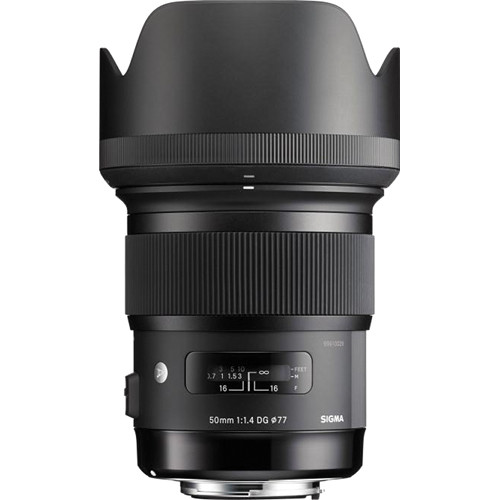
Sigma 50mm f/1.4 DG HSM Art Series (review)
I hated SIGMA lenses for years, but the new Art series primes that I’ve tested have blown me away. We are talking almost Zeiss Otus good, so I highly recommend their primes. Their zoom’s haven’t impressed me yet, but I suspect they will eventually have one that gets my attention.
Personally, I prefer to shoot my portraits at 200mm using my 70-200mm zoom, but what I lose with that is the very shallow depth of field that can be appealing when you go from f/2.8 to f/1.8 or less. Wedding photographers especially enjoy shooting with these very shallow depth of field lenses, so it all depends on what you need.
The Canon EF 200mm f/2L IS USM Lens is also one of my all-time favorite lenses for portraits and offers the best bokeh of any lens I’ve tested. Nikon users swear by the Nikon AF-S NIKKOR 200mm f/2G ED VR II Telephoto Lens, so you can’t go wrong with either. The downside is that they are super expensive, and very heavy so you really need to be a successful pro to justify the price. Personally I wouldn’t buy a 200mm f/2.8 prime them until you’ve got a good collection of zooms and other lenses first.
Another great option for less money are the amazing Canon EF 135mm f/2.0L USM or Nikon AF DC Nikkor 135mm f/2.0D – both of which give you equally wonderful bokeh for a fraction of the cost, but at the expense of poor AF performance and terrible minimum focus distances.
Sharpness-wise, you will find that the latest top of the line zoom lenses from Canon and Nikon are just as sharp, if not sharper, than these lenses. Don’t be fooled into thinking that you need prime lenses for maximum sharpness because that simply isn’t the case (see my 11-24mm review for proof). The lenses do offer better bokeh over the zoom’s, but that’s it. The price you pay for that is a terrible minimum focus distance and very bad focus performance compared to the newest zooms (excluding the SIGMA Art primes).
If your pockets are very deep and you don’t mind manually focusing, the sharpest lens I’ve ever tested are the Zeiss Otus lenses shown below. It’s an amazing lens that works for both Canon and Nikon (be sure to buy the right one) but it’s a specialty lens for scenarios where you can afford to manually focus. The aforementioned SIGMA Art series is almost as good and its autofocus means that most will get sharper shots for a fraction of the price.
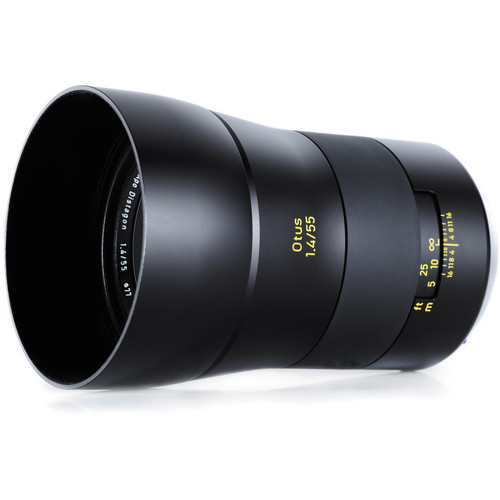
Zeiss 55mm f/1.4 Otus Distagon T* Lens (review)
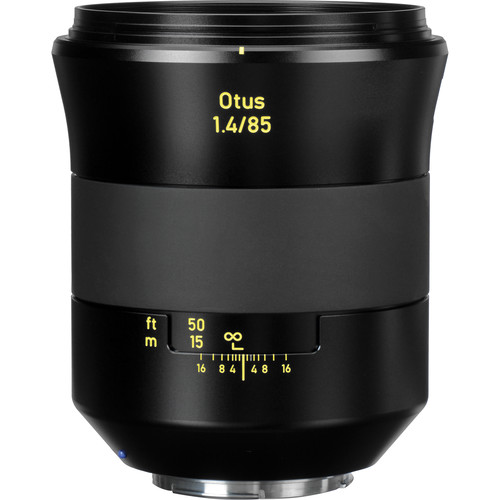
Zeiss Otus 85mm f/1.4 Apo Planar T* ZE Lens (review)
Long Range Sports & Wildlife/Bird Zoom Lenses
There’s a joke in the wildlife photography community that the lens you need is always 2x longer the one you have withy, and that’s definitely the truth in sports many times as well! These are lenses that most people will be better off renting from LensRentals.com rather than spending a fortune on them only to have them collect dust most of the time. However, those who make a living off sports and wildlife shooting will find them a mandatory item in their kit that will pay for themselves. With that, here’s my recommendations:
The new 2.8 versions of the Canon 300mm and Nikon 300mm are phenomenal lenses that I highly recommend for indoor sports shooters, whereas outdoor the 400mm is significantly more helpful. You can always do extenders, so don’t exclude these lenses from your search but my advice is to go with either the 400 prime or the 200-400 first if you are shooting outdoors mostly and can afford it. If you are shooting indoor sports like basketball then the 300mm may be sufficient for your needs.
To the newcomer, the not so obvious advantage of these big lenses is that you can get a wonderful bokeh but still get enough depth of field at f/2.8 to get an entire subject in focus. Keep this in mind before going up to long lenses that only offer f/5.6 as their wide open aperture.
For those on a tight budget, the SIGMA 120-300mm f/2.8 DG OS HSM | S is pretty sharp, but in my testing it lacked the same focus and stabilization performance of the Canon and Nikon lenses recommended here.
Going on a Safari? The all-new Canon 100-400m f/4.5-5.6L IS II USM is fantastic and highly recommended for its all purpose functionality if you can’t afford to take one of the 200-400mm’s. While primes are great, most of us only do the Safari once with little control of where we go or the time spent, so having a razor sharp zoom will help increase your odds of getting the shot and avoid having to switch lenses in a dusty environment.
Canon bargain hunters can get decent results with the Canon EF 400mm f/5.6L USM Lens, but avoid the 400mm DO version as it’s too soft. A new Canon 400mm f/4 DO II is on the way, so it might finally offer the promise of great sharpness and performance in a lighter weight package. However, I haven’t a a chance to use it yet so I’d advise renting or doing research before buying.
Nikon bargain hunters might be tempted to get the Nikon AF-S NIKKOR 80-400mm f/4.5-5.6G ED VR Lens, but when I’ve even mentioned it before I’ve got numerous emails from readers who said don’t waste your money on that lens due to slow focus performance and soft image quality.
Sports & Wildlife Super Telephoto Primes
These lenses are expensive as some cars, so these are not for the casual shooter. In most cases you’ll want to rent these rather than owning them simply because they are just too bulky to store and the cost justification just isn’t there. I personally recommend renting from LensRentals.com and saving your money for other purchases.
Yes, they are fun under the right circumstances but these are definitely for experienced pro-level shooters only.
Teleconverters
It’s also quite common for bird hunters to use teleconverters which are lens adapters that multiple the zoom level of your lens by the value of the teleconverter (1.4 times and 2.0 times are most common):
These sound great, but you can lose auto focus with the 2x on some camera and lens combos, so do your research. You will lose light and sharpness with an extender, but sometimes that tradeoff is worth the extra reach. You should also keep in mind your output format – if you are using a 16 megapixel camera and your highest resolution output will be a 4k television or a 8x12” print then you only need 8 megapixels. This means you can crop 50% of the image and still have high quality without resorting to a 2x teleconverter.
Macro
Everybody who gets their new DSLR wants to shoot pictures of bugs or flowers so to get the best results you need a macro lens which can be fairly affordable and very useful for more than just macro work. Here’s some of my recommendations:
- Canon 100mm f/2.8L Hybrid IS USM Macro ( or EF 100mm f/2.8 USM Macro) or Nikon AF Micro-Nikkor 105mm f/2.8G ED-IF AF-S VR. I’ve used both of the Canon’s and sharpness-wise my testing showed they were roughly the same, but image stabilization is an advantage worth upgrading to if you can afford it.
- Canon EF 180mm f/3.5L Macro USM or Nikon AF Micro Nikkor 200mm f/4.0D ED-IF
TIP: Macro lenses make great portrait lenses too! If you search my Photographer’s Notebook you’ll find plenty of cases where I use my 100mm macro for portraits.
Architecture
The advantage of these lenses is that they feature perspective control which allows you to take an image of a building without distortion. Here’s a really bad article I did a long time ago which demonstrates this point.
Here’s some of the recommendations I have:
- Canon Tilt Shift TS-E 24mm f/3.5L II Manual Focus or Nikon PC-E Nikkor 24mm f/3.5D ED Manual Focus – Outdoors
- Canon Tilt Shift TS-E 17mm f/4L (No Nikon equivalent) – Indoors
If you make a living off your tilt-shift work and need the highest possible quality, then I’d suggest trying out the Schneider PC-TS series lenses.
These are just my recommendations
This list is a general guide, not the word of God, so some people will disagree with me. I chose the Canon lenses based on what I would get for each category if I were to (or already have) spent my money. For Nikon, I tried to pick lenses that are equivalent to the Canon's based on discussions with Nikon photographers, but I have less experience with the Nikon lens.
I have first choice appearing first in the table or indicated by the number 1, a second underneath or indicated by the number 2, etc... In the case where there is no second choice, I personally believe that unless there’s a budget or price consideration, you’ll be happier over the long haul with first lens choice that I recommend. For cases where there are more than two recommended, then you can assume that the third choice is a very good budget choice if your budget is tight. Second choices are usually a compromise over the first choice, but still worth your consideration.
Another important thing to mention is that entry level Nikon bodies only support autofocus for AF-S and AF-I lenses because these bodies do not contain a built-in focus drive motor. As a result, be careful when shopping so you don’t end up with an expensive lens that’s manual focus only on your camera body.
Getting more info on lenses
You should do your own research and use the list above as a starting point. I recommend that you start by reading reviews, and I've found the following sites to be a good starting point:
Canon
Nikon
Once you've narrowed down your list of lenses, you can visit my favorite site to research lenses - SLRGear.com and look at their Blur Index for tested lenses (both Nikon and Canon) to see which lens is the sharpest. The Digital Picture also offers a great lens comparison tool.
Lastly, you can go to places like http://www.pixel-peeper.com/ and Flickr.com to look at actual photos taken with a given lens and body (similar to yours) and see what the final results look like (given the limitations or great skill of the photographer).
But what about Sigma, Tamron, EF-S, DX lenses, etc...
Yes, there are alternatives to save you money on lenses, but I’ve found that the Canon and Nikon hold their value very well so the resale on the bargain variety third party lenses sucks – big time! People who buy third party lenses eventually get around to buying the high end Canon and Nikon lenses so when they resell them they take a beating. I’ve never lost more than 10% when selling my pro lenses but if you search the web you’ll find the third party lenses going for much less than their Canon and Nikon counterparts. This doesn’t mean these lenses aren’t good, it’s just an economic reality that I’ve observed.
Canon does offer some outstanding EF-S lenses that offer a great value, as does Nikon with some of its DX lenses. However, one consideration for these crop sensor lenses is that you can’t take advantage of them on full sensor cameras so if you decide to upgrade you may end up having to sell your lenses at a loss. As a result is my recommendation to get the full frame compatible lenses when possible and if you must get a cropped sensor lens then be sure to get the best ones offered by Canon or Nikon so you can get the best resale price.
If you do decide to go with third party lenses, I’ve noticed a great jump in the quality of SIGMA lenses lately in their new lenses released in 2013 later with the designation of Art, Contemporary and Sports series lenses which can easily identified by the silver dot on the lens (shown below).
These new SIGMA’s are built at a much higher quality level than I felt the previous models were, so they deserve consideration significantly more than the models that came before them. Here’s an example of the first SIGMA lens to blow me away enough to recommend it:
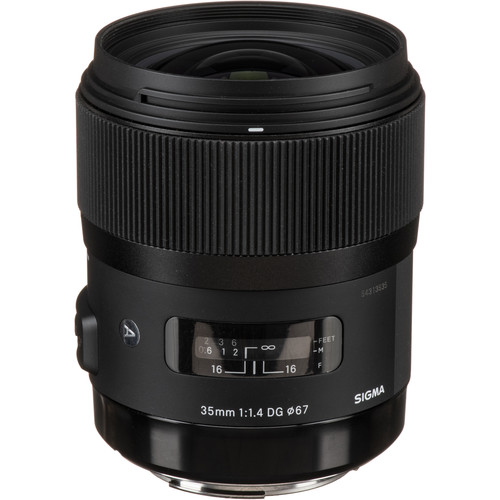
Sigma 35mm f/1.4 DG HSM Art Series Lens–The Best Sigma I’ve Ever Tested
As of May 2015, the most recent Art series to blow me away was the 24mm:
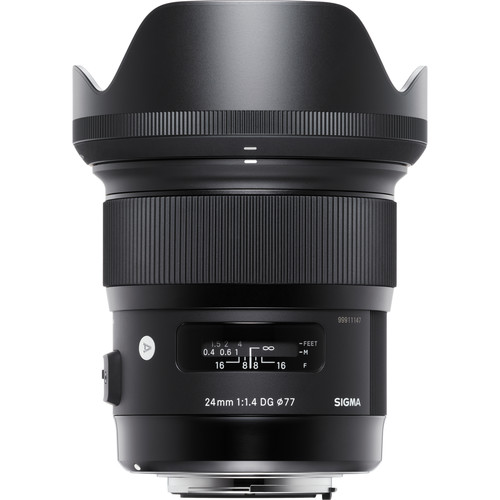
Sigma 24mm f/1.4 DG HSM Art Lens (review)
Of all that I’ve tested, the aforementioned SIGMA 50mm Art series is definitely my favorite.
I've bought my lens, but now I have buyers remorse
Let's face it, there are so many great lenses that we can afford to purchase so we'll always have to make compromises. This leads to what I call Lens Lust which is a condition whereby you lust after a lens you don't own, but wish you did. For some it is painful, but they survive. For others, it is incurable so they sell their lens (usually at a loss - which they never admit even to themselves) and buy the lens they lust after, only to have the same condition occur again immediately after the purchase. Severe cases of Lens Lust will even cause some to purchase the same lens that they previously owned again at some point in the future as I’ve done with the Canon 50mm f/1.2L (which I own now – for the third time).
There is a cure for lens lust and it is quite simple - go to forums and read the user reviews of your favorite lenses. On these forums you'll have hundreds of people telling you how awesome your lens is and how it is so much better than other more expensive lenses. Of course, most of these people are writing their reviews shortly after they get their lens, so if you look carefully they'll bash the same lens when they review another lens. This happens because an episode of Lens Lust causes them to replace their short-term beloved lens with something they think is better. In the end, this is easiest way to be happy with your decision. Now stop worrying and go take advantage of BillMeLater by PayPal on B&H, Amazon or Adorama and get that lens you've been lusting after!
Carrying and Insuring your lenses
Check out my article about camera insurance to find out why you should insure your lenses and why a good bag is so critically important. Insurance costs me about 1% of the cost of my gear – per year, for zero deductible so it’s a no brainer for me.
I highly recommend Think Tank Photo bags for carrying your lenses as they are bags designed by pro photographers to meet the rough and tumble demands of pro photographers. However, the prices of their bags are competitive with Tamron, Lowepro, etc… which I don’t find to be nearly as well made. See my reviews for TTP bags at the bottom of this other article.
Other articles you may enjoy
If you enjoyed this article, you may also enjoy these:
Disclosure
If you make a purchase using links found in this article, I may make a commission. It doesn’t cost you a penny more, but it does help to support future articles like this.
NOTE: This site requires cookies and uses affiliate linking to sites that use cookies.
. Either way, your support is greatly appreciated!
This blog is intended for freelance writing and sharing of opinions and is not a representative of any of the companies whose links are provided on this site.
The opinions provided are of Ron Martinsen alone and do not reflect the view of any other entity





